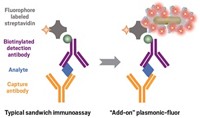Advertisement
Grab your lab coat. Let's get started
Welcome!
Welcome!
Create an account below to get 6 C&EN articles per month, receive newsletters and more - all free.
It seems this is your first time logging in online. Please enter the following information to continue.
As an ACS member you automatically get access to this site. All we need is few more details to create your reading experience.
Not you? Sign in with a different account.
Not you? Sign in with a different account.
ERROR 1
ERROR 1
ERROR 2
ERROR 2
ERROR 2
ERROR 2
ERROR 2
Password and Confirm password must match.
If you have an ACS member number, please enter it here so we can link this account to your membership. (optional)
ERROR 2
ACS values your privacy. By submitting your information, you are gaining access to C&EN and subscribing to our weekly newsletter. We use the information you provide to make your reading experience better, and we will never sell your data to third party members.
Environment
MRI Of Tissue pH Makes For Diagnostic Tool
June 2, 2008
| A version of this story appeared in
Volume 86, Issue 22
Because changes in tissue pH can indicate problems such as cancer and inflammation, a clinical method for imaging pH in living systems could be a powerful diagnostic tool. A team of researchers led by Kevin M. Brindle at the University of Cambridge generates maps of tissue pH by magnetic resonance imaging (MRI) of hyperpolarized 13C-labeled bicarbonate (Nature, DOI: 10.1038/nature07017). Bicarbonate is the main extracellular buffer in living systems. Tissue pH can be calculated from the ratio of bicarbonate to carbon dioxide by using the Henderson-Hasselbach equation, pH = pKa + log10([HCO3-]/[CO2]). The low natural abundance of 13C means that clinically relevant MRI measurements of H13CO3- and 13CO2 require large boosts in sensitivity. The researchers get the needed boost by using bicarbonate that has been labeled with hyperpolarized 13C, which dramatically increases its sensitivity to MRI detection. They inject the bicarbonate into mice with tumors and map the calculated pH values. The main drawback of the method is the rapid hyperpolarization decay. Nevertheless, because it uses an endogenous buffer that is already safely administered to humans, the method should be easily transferred to the clinic, the team notes.






Join the conversation
Contact the reporter
Submit a Letter to the Editor for publication
Engage with us on Twitter